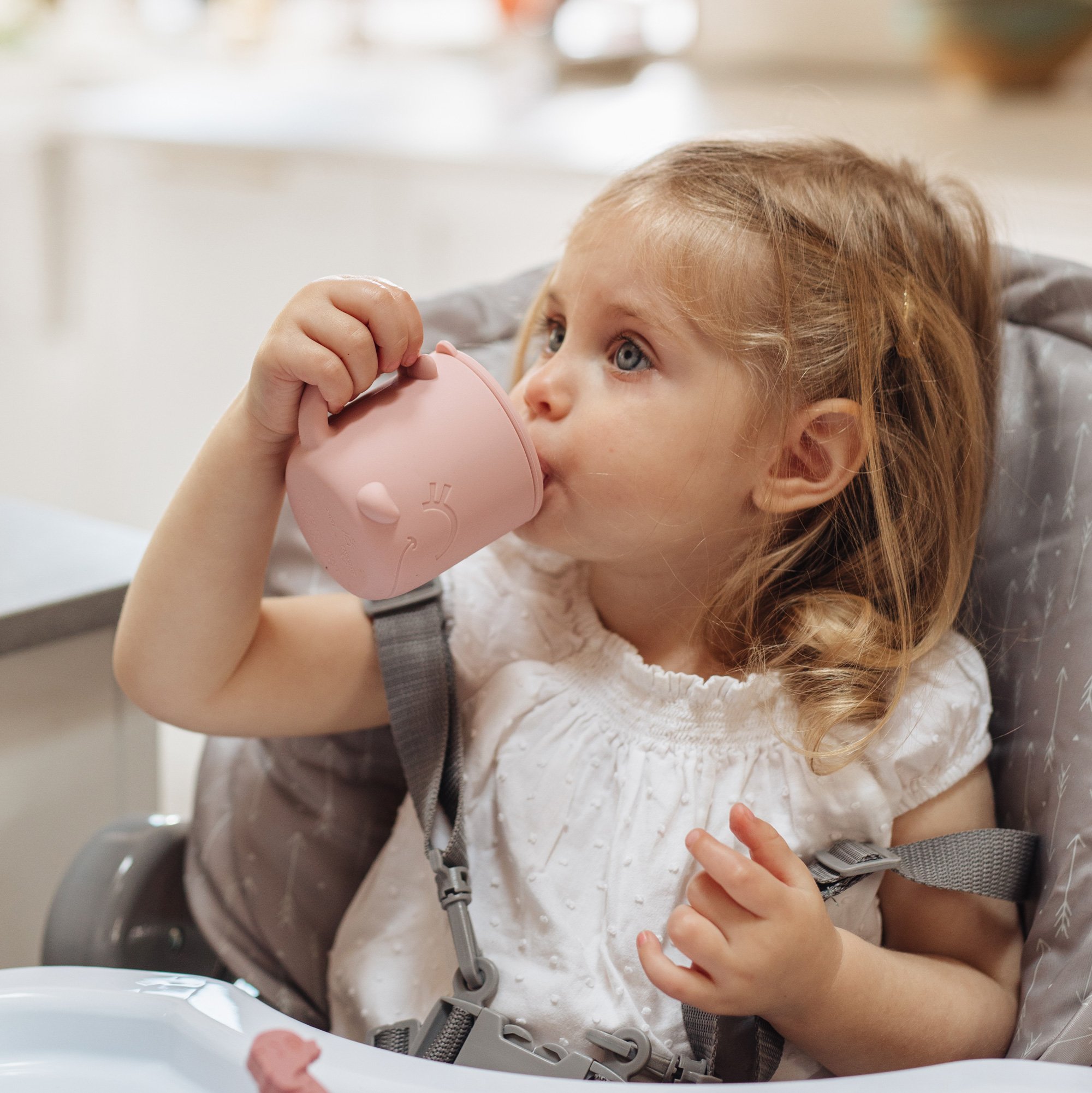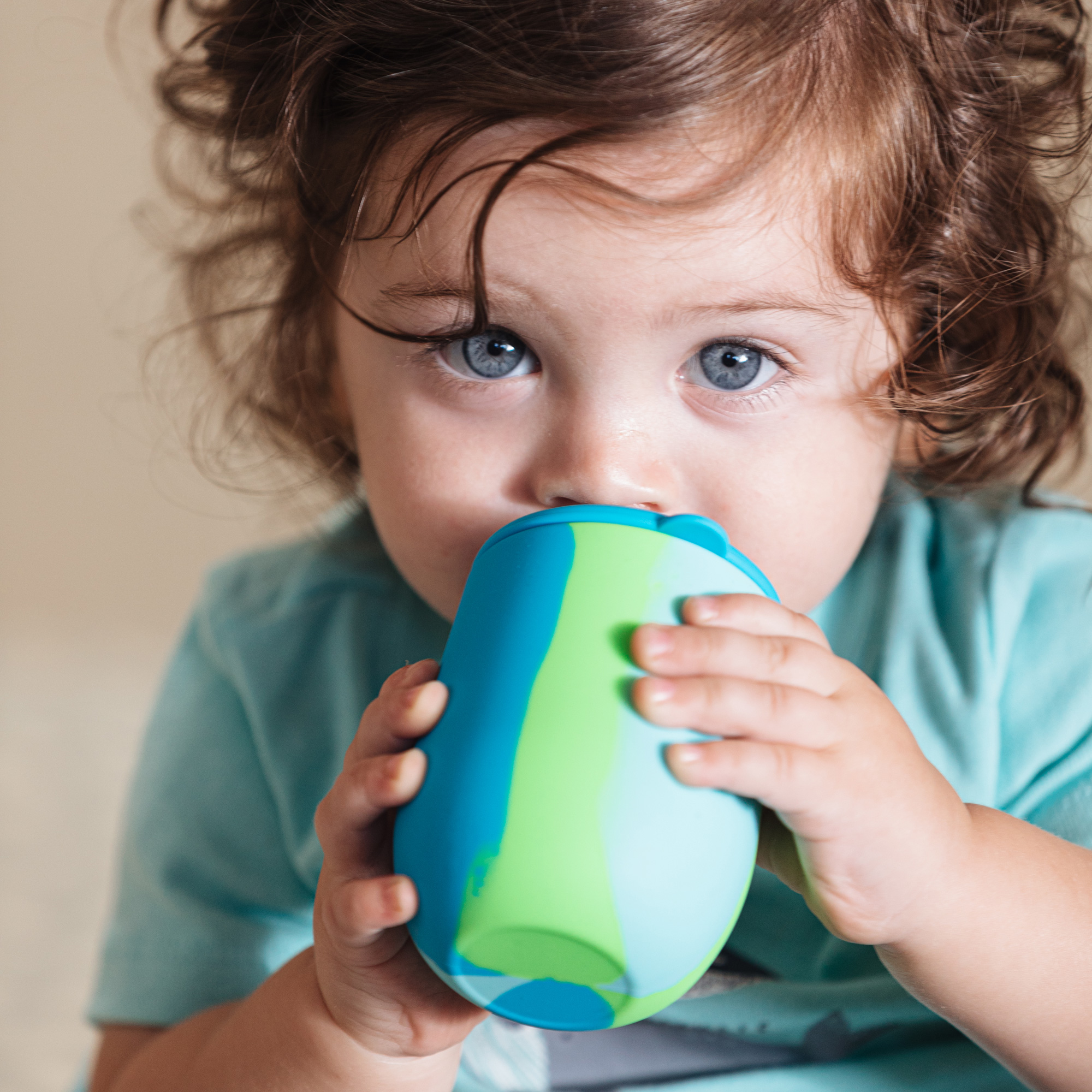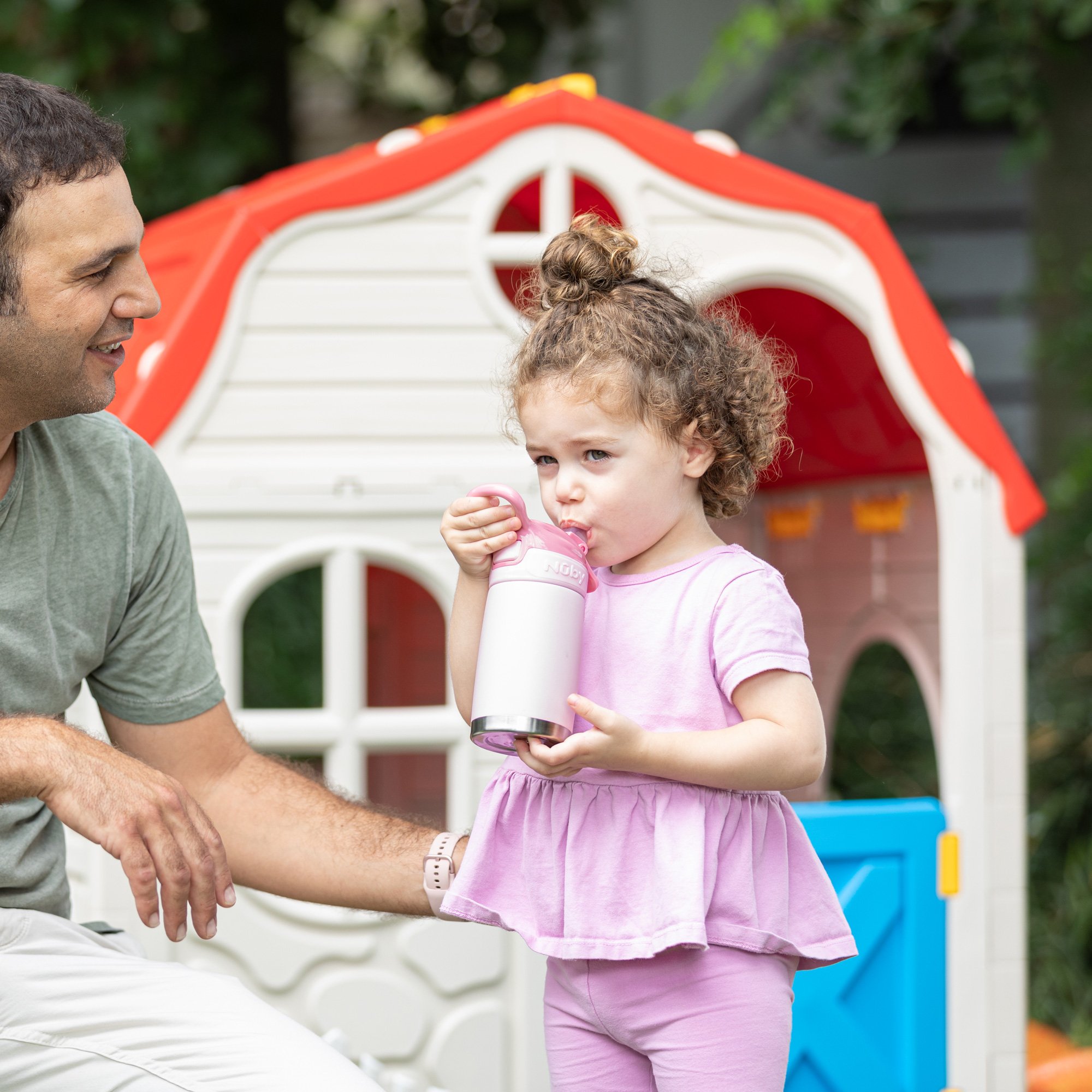As adults, we know that we should be drinking around eight glasses of water a day to stay healthy and hydrated. But how much is right for your toddler? New parents often worry that their toddler isn't getting enough water, and if you have a picky eater or drinker, encouraging them to drink more can be difficult.
Ensuring your child gets enough water is vital as it can help flush out any toxic substances and improve their muscle movement, heart health, and brain functions. Keep reading to find out how much water a toddler needs, as well as how to encourage a particularly stubborn drinker and what to look out for if you're worried about dehydration.

How Much Water Should a Toddler Drink a Day?
The amount of water a toddler needs to drink a day can vary based on the weather or physical activities. For example, if your toddler is running around the park on a hot day, they'll need to drink a bit more to avoid the risk of exhaustion and dehydration.
Ideally, toddlers between the age of 1-3 should drink around 5 cups of water a day, depending on their age. An easy rule of thumb to remember is to add an 8-ounce glass of water for each year. So, a 1-year-old should have 8 ounces of water, a 2-year-old should have 16 ounces, and a 3-year-old should have 24 ounces. This can come from a mix of beverages rather than just plain water, including milk and 100% juice. However, try to stick to low-sugar juices and low-fat milk.
These rules are a general guide for how much water your child should drink. If you're unsure of other factors that need to be considered, such as their height, weight, and general activity level, speak to your pediatrician, who will determine how much water your child needs more accurately.
What Types of Water Can my Toddler Drink?
While plain water is best for your toddler, if they're being fussy and want something different or more flavorful, you do have some options.
- Sparkling water: At 2 years old, it's perfectly acceptable to give your child sparkling water with no added sugars.
- Flavored water: Toddlers can drink flavored water with no added sugars occasionally if it helps to encourage your child to drink more. But it shouldn't be their main source of water and should be more of a treat than a regular drink.
- Tap water: Once your child is over 6 months old and starting to eat solid foods, they can safely drink water straight from the tap without needing to be boiled first.
- Bottled mineral water: As long as the level of dissolved minerals, such as sodium and fluoride, are low, bottled mineral water is fine for your toddler to drink.

How to Encourage Your Toddler to Drink More Water
We understand it's not always easy to get your toddler to drink as much water as they need. You may need to prepare yourselves for a few tantrums and spilled cups of water on the floor. The secret is to practice what you preach. Children will tend to follow your lead, so if they see you drinking or asking for water in a restaurant rather than sugary or fizzy drinks, then they'll find it easier to accept, too.
Some other ways to encourage your toddler to drink more include:
- Make it fun: Serve the water in colorful bottles or cups, sippy cups or straw cups, and cups with your toddler's favorite cartoon character or animal. When they see their favorite cup coming toward them, they'll be excited and reach for it.
- Keep water bottles around the house: Toddlers are very busy people. From reading books and watching cartoons to diving in their ball pit and snuggling up with their favorite plushie, they can often get too distracted and forget to drink. By keeping a water bottle nearby for them to see at all times, they'll be more likely to reach for it when the thirst hits.

How to Hydrate a Toddler Who Won't Drink
Even after trying the above tips, if your child is feeling ultra-defiant, don't worry, as there are plenty of other ways to make sure they're hydrated.
Water content can be found in a variety of fruits and vegetables, including:
- Watermelon.
- Strawberries.
- Cantaloupe.
- Peaches.
- Lettuce.
- Cabbage.
- Spinach.
- Cucumbers.
Giving your child any of these foods as a healthy snack will help increase their water intake and give them a good source of vitamins and fiber.
While you can't, and shouldn't, replace their water intake with food, it's the best and healthiest way to get a child who refuses to drink some much-needed water. Ideally, water sourced from food should only be around 1-2 cups, with the rest from drinking water.
Signs of Dehydration to Look Out For
As children are growing and developing, they can be more susceptible to dehydration. If you're worried your toddler hasn't had enough, look out for these common dehydration signs:
- Decreased urination.
- Constipation.
- Very few or no tears when crying.
- Paler skin.
- Dry skin.
- Dry mouth.
- Sunken eyes.
- Irritability.
If you think your toddler may be dehydrated, you'll need to act fast. Offer any of the above options to them to increase their water intake, and reach out to your pediatrician immediately before these symptoms worsen.
To help your child drink as much water as they need, take a look at our fun water bottles for kids. For older children, check out our Thirsty Kids water bottle range. These bottles are perfect to travel with, easy to hold and carry, and available in a huge variety of colors and patterns that your child will love.



